NEW DELHI: Grandmaster Srinath Narayanan aptly describes the essence of chess variants: "It’s like writing an article: if you have more time, then you do better work," highlighting the core difference between classical chess and its faster counterparts, rapid and blitz.
On Sunday, the blitz format witnessed a resurgence from Magnus Carlsen, often hailed as the "greatest of all time."
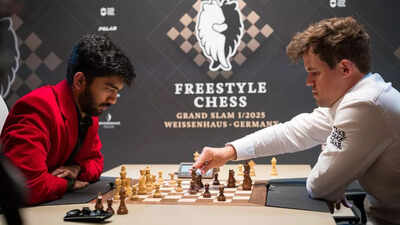 *D Gukesh and Magnus Carlsen face off in a chess match.*
*D Gukesh and Magnus Carlsen face off in a chess match.*
After Gukesh Dommaraju, the reigning World Champion, took the lead in the rapid event at the Super United Rapid and Blitz in Croatia, Carlsen unleashed his "B-game"—his own term—to demonstrate that it was "usually enough" for him to secure yet another title.
Following his victory, Carlsen posted a playful "haters" message on social media, which he quickly deleted. The message, however fleeting, resonated.
Earlier that day, the spotlight was on the highly anticipated clash between Carlsen and Gukesh, a battle that ended in a swift, 14-move Berlin draw in just over a minute.
The encounter was devoid of theatrics or psychological warfare; only a quiet handshake marked its conclusion. While Gukesh appeared composed, Carlsen seemed visibly irritated, casting a glance at the display board and shrugging as he departed.
This subdued draw added another layer to a rivalry shaping the current transition era in world chess.
Carlsen has never been one to mince words. Recently, Gukesh has found himself in the crosshairs of the Norwegian's comments—perhaps unintentionally, but noticeably.
From seemingly downplaying Gukesh’s credentials as World Champion to questioning his capabilities in faster formats, Carlsen has raised subtle yet pointed questions.
However, Gukesh has consistently responded not with words, but with his moves on the board.
Despite Carlsen ultimately securing the Norway Chess title earlier this year, it was Gukesh who unsettled the home favorite, causing the Scandinavian to express his frustration by audibly hitting the table – a moment that quickly gained traction on social media.
Prior to the Zagreb tournament, Carlsen remarked, "Gukesh hasn’t done anything to indicate that he’s going to do well in such a tournament."
Many observers, including Carlsen himself, anticipated that Gukesh's perceived weaknesses in faster formats would be exposed once again.
Instead, the 19-year-old defeated Carlsen, dominated the rapid section, and finished third overall in Croatia.
Grandmaster Pravin Thipsay, who coached a team featuring Carlsen in the Global Chess League, offered his perspective: "Sometimes when players compare levels, they remember their own best games and someone else’s bad ones. That creates a gap in perception. A player’s level is their worst and best together."
He added, "He may still be the world No. 1, but that doesn’t give him the right to undermine others. Even Garry Kasparov didn’t win everything. And when Kasparov made such comments, he at least had the grace to acknowledge when he was wrong."
Thipsay also pointed out Carlsen's declining motivation in classical formats: "When the genuine feeling develops that you’re much better than someone else, and then it becomes surprising when you’re not able to beat them. That’s where the lack of motivation creeps in."
"Frankly speaking, Magnus has a different kind of problem too: his inability to concentrate for two, three, or four hours is real. It’s a serious issue,” he said, suggesting that outbursts like banging the table stem from a deeper frustration: an unwillingness to fully accept that younger players like Gukesh are quickly catching up.
“Gukesh is very composed,” said Thipsay. “Even when Carlsen banged the table, he didn’t react. That shows maturity. The younger generation is mentally tougher. They’re trained to stay in control.”
GM Srinath Narayanan, captain and coach of the Indian men’s team that won gold at the 45th Chess Olympiad in Budapest, believes that the rivalry, while captivating, is being shaped more by narratives than genuine animosity.
“Carlsen tends to be blunt, and because he’s Carlsen, everything he says is magnified,” he explained. “But I don’t think he’s targeting Gukesh personally. It’s a rivalry like many others, made sharper because one is the World Champion, and the other is still the highest-rated player.”
Srinath draws a parallel between the current situation and the early 2000s, when a young Carlsen challenged established legends like Viswanathan Anand and Vladimir Kramnik. “There was skepticism back then too. Now, Carlsen finds himself on the other side of that equation,” Srinath noted.
“In the chess world, Magnus is the benchmark for everyone. There’s still a global belief that he’s the best player out there. Maybe not forever, but certainly for now. I remember at the 2019 World Rapid and Blitz, he didn’t do too well in the rapid, especially on day two. I played him that day and managed to beat him. But on day three, he started playing faster. He performed much better in the blitz that followed. That’s Magnus,” he added.
“Carlsen’s respect for Gukesh is probably only going to grow. Of course, it depends on how Gukesh develops. But in these situations, the younger player usually keeps rising while the older one gradually declines. At some point, Gukesh might well surpass Carlsen, though that still depends on many factors.”
While Carlsen may still hold the title of GOAT (Greatest Of All Time), Gukesh is steadily closing the gap, doing so without any unnecessary theatrics.
Newer articles
Older articles
 Evil Eye Amulet: Protective Charm or Portal to Dark Forces? A Cultural Debate
Evil Eye Amulet: Protective Charm or Portal to Dark Forces? A Cultural Debate
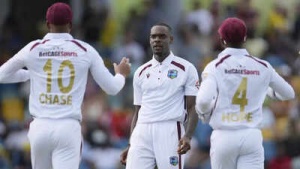 Jayden Seales Fined by ICC for Provocative Gesture During Australia Test Match
Jayden Seales Fined by ICC for Provocative Gesture During Australia Test Match
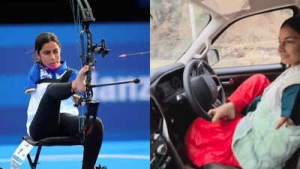 Paralympic Archer Sheetal Devi's Viral Video Shows Her Driving Car with Feet, Defying Expectations
Paralympic Archer Sheetal Devi's Viral Video Shows Her Driving Car with Feet, Defying Expectations
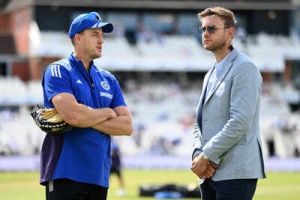 Broad Slams India's Team Selection After Headingley Test Loss, Calls for Roster Tweaks at Edgbaston
Broad Slams India's Team Selection After Headingley Test Loss, Calls for Roster Tweaks at Edgbaston
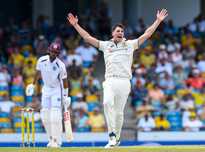 Umpire Controversy Erupts: West Indies Coach Sammy Questions Holdstock's Consistency in Barbados Test
Umpire Controversy Erupts: West Indies Coach Sammy Questions Holdstock's Consistency in Barbados Test
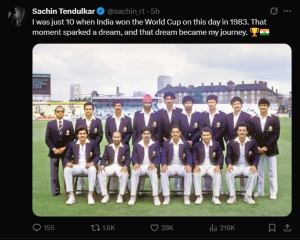 Sachin Tendulkar: 1983 World Cup Win Sparked My Cricket Dream at Age 10
Sachin Tendulkar: 1983 World Cup Win Sparked My Cricket Dream at Age 10
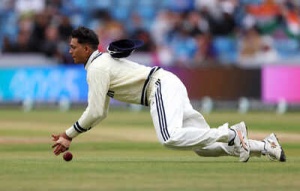 Jaiswal's Fielding Woes: Ex-India Star Kaif Points to Potential Cause for Dropped Catches in England Test
Jaiswal's Fielding Woes: Ex-India Star Kaif Points to Potential Cause for Dropped Catches in England Test
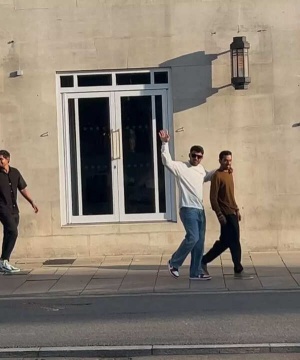 Team India's England Tour: Rahul's Sleep Strategy, Coaching Rituals, and Coffee Culture Revealed
Team India's England Tour: Rahul's Sleep Strategy, Coaching Rituals, and Coffee Culture Revealed
 Suryakumar Yadav Successfully Completes Sports Hernia Surgery, Eyes Return to Cricket
Suryakumar Yadav Successfully Completes Sports Hernia Surgery, Eyes Return to Cricket
 Gujarat Cricket Set to Launch T20 League in 2025-26 Season
Gujarat Cricket Set to Launch T20 League in 2025-26 Season